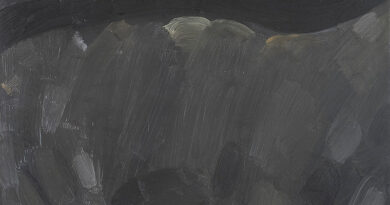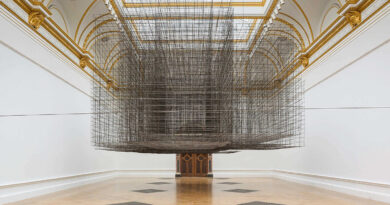self-portrait: identity representation, destruction and construction
MÜMTAZ SAĞLAM
The practice of self-portraiture, which is often identified with collective problems, can undoubtedly be read as a matter of self-examination, which becomes a strange and interesting experience from the outset. Moreover, in such presentations, which also take on the character of a genuine confession, the testimony of the image easily and directly includes much about the face and beyond. Alternatively, it structures a highly specific and immanent visual field that refers to cultural memory. Here, detecting facial expression is a prerequisite for reaching an emotional background that coincides with both the narrative and the personality. This can be seen in examples like Luc Tuymans’ or Gerhard Richter’s characterization of the self-portrait through the manipulation of erased images, where it turns into a seemingly plausible displacement and translation of identity. Cindy Sherman’s practice of assuming completely different identities in front of the camera, in representations related to psychological connections and gender roles, can also be evaluated in this context.
When artists paint their own image, they directly question their time and existence. In this sense, the self-portrait is a historical document, its visual order shaped by the artist’s self-view.
Today, the way artists handle their own image – through deformations, fantastical interventions, abstraction, or obscuration for various reasons – pushes the practice towards a more integrated depiction and becomes a declaration of complex self-confrontation. For instance, presenting oneself in a shaken, tired, and strange typology reveals a traumatic reality through deferral and exposure. Consequently, the artist’s face in the mirror transforms into an extraordinary aesthetic phenomenon, becoming an almost amorphous image element with a strange, ugly, or vulgar presentation.
On the other hand, the narrative potential of self-portraits has always been loaded with statements about the artist’s sensibilities, behaviors, or preferences. Therefore, this practice is a highly contemporary and realistic plastic phenomenon that, in every period, reaches the permeability of subject and work through the face. Here, the imagination of identity, enriched with emphasis on difference, distinction, or similarities, reaches conclusions about what lies beyond the face through evaluations made at an extraordinary depth. For this reason, we should carefully consider the critical and transcendent realistic quality of performative practices such as removing expression, depersonalization, or stripping away spirituality. Attention should also be paid to examples that emphasize identity crises or severe miscommunication arising from gender debates for social and political reasons, and that point to these issues through traumatic images.
In this sense, the practice of self-portraiture, which is often identified with collective problems, can undoubtedly be read as a matter of self-examination, which becomes a strange and interesting experience from the outset. Moreover, in such presentations, which also take on the character of a genuine confession, the testimony of the image easily and directly includes much about the face and beyond. Alternatively, it structures a highly specific and immanent visual field that refers to cultural memory. Here, detecting facial expression is a prerequisite for reaching an emotional background that coincides with both the narrative and the personality. This can be seen in examples like Luc Tuymans’ or Gerhard Richter’s characterization of the self-portrait through the manipulation of erased images, where it turns into a seemingly plausible displacement and translation of identity. Cindy Sherman’s practice of assuming completely different identities in front of the camera, in representations related to psychological connections and gender roles, can also be evaluated in this context.
Portraits and self-portraits clearly present the results of observations reached through identity, role, and status values, accompanied by psychoanalytic determinations. This situation, which is especially relevant to discussions on the concept of the other, makes the self-portrait a distinct matter of creation, structured within the reality of confronting oneself. The conception of the subject shaped here appears as a field of internal action moving towards narcissism, through intrinsic connections such as gender representation and identity construction. It’s also possible to speak of a situation that evolves into a desire-pleasure phenomenon, stemming from an erotic attraction or arousal that emerges at a later stage.
The symptoms that emerge in the flow of subjectivity – the passionate observation flowing from the unconscious, the disclosed form, the transcendent shaping through direct transmission – are now expressions almost driven to neurosis. Precisely for this reason, it would not be wrong to think that every self-portrait experience is shaped according to the possibility of some kind of detour. Indeed, it is often futile to expect an irreconcilable, blurred, and problematic gaze to shape a self-portrait through a straightforward observation-painting dialogue.
Mümtaz Sağlam, Copyright © 2024 / All Rights Reserved.




